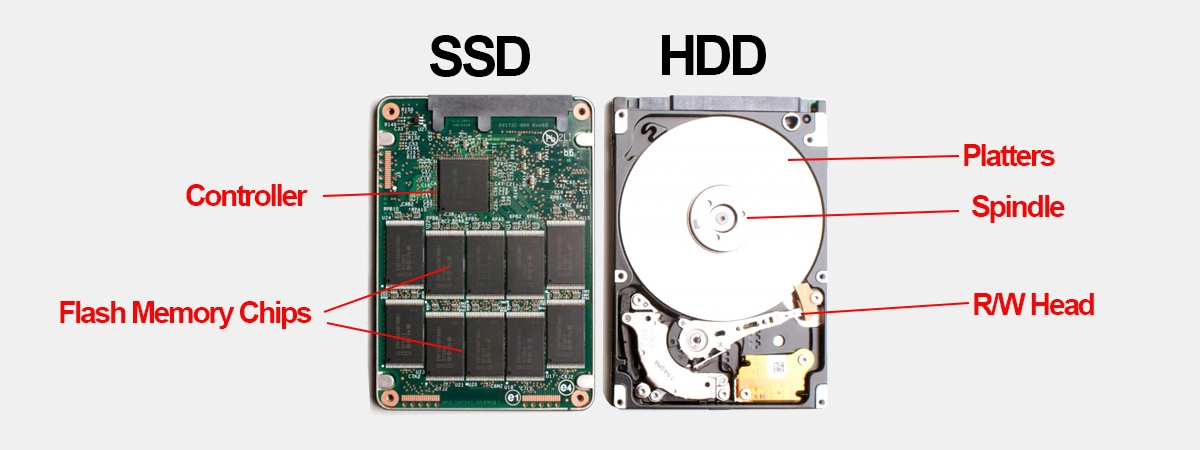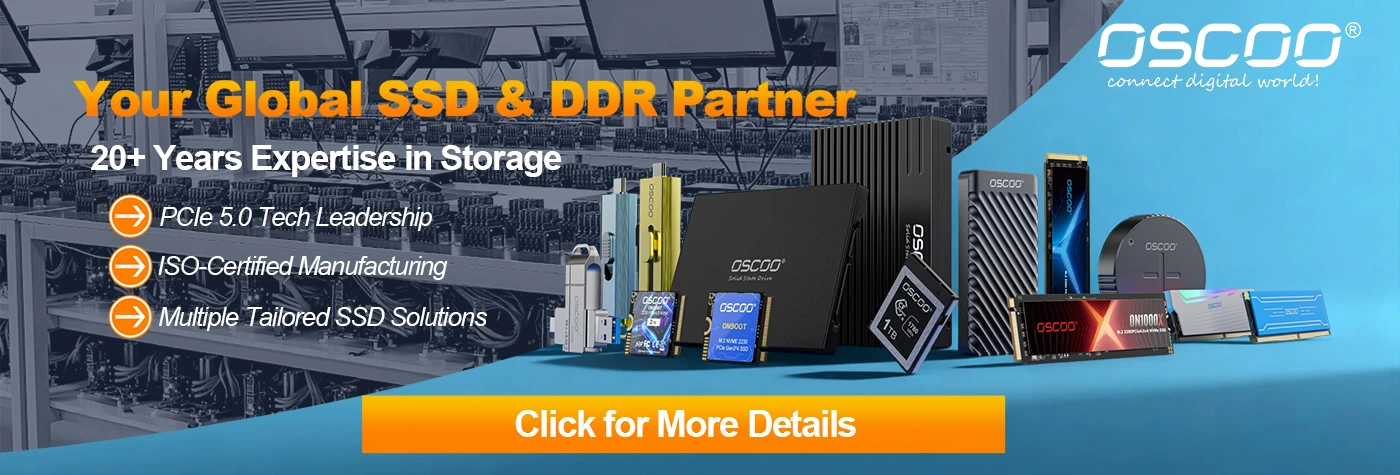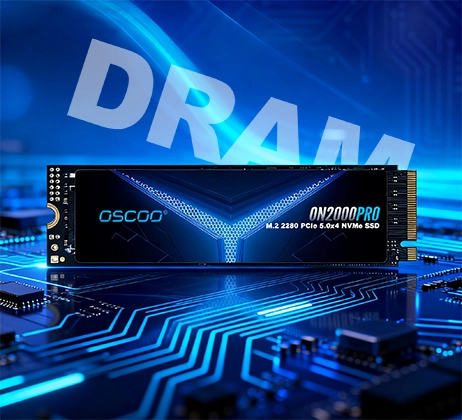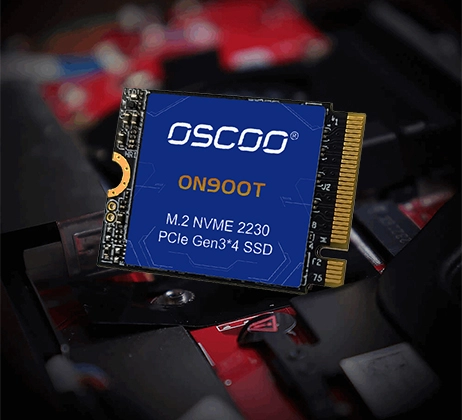
The computer’s “storage warehouse” – the hard drive – determines the speed of booting, loading, and file transfers. The current mainstream options are Solid State Drives (SSDs) and Hard Disk Drives (HDDs). An HDD works like a precise “record player,” relying on spinning disks and moving read/write heads. An SSD, however, functions more like a super-powered USB flash drive, using flash memory chips and a controller chip to access data rapidly through electrical signals.
| Characteristic | SSD (Solid State Drive) | HDD (Hard Disk Drive) |
|---|---|---|
| Speed | Extremely Fast | Slow |
| Capacity | Lower Value | Higher Value |
| Size / Weight | Small & Light | Big & Heavy |
| Noise | Completely Silent | Audible motor hum and head clicks |
| Shock Resistance | Strong | Weak |
| Power Use / Heat | Low | High |
| Cost | High | Low |
| Data Recovery | Very Difficult | Easier |
| Best Use Case | Operating System / Software / Games | Media Library / Backup Archive / Cold Storage |
Table of Contents
ToggleDifferences in Working Principles

How Solid State Drives (SSDs) Work
The core components of an SSD are flash memory chips for storing data and a controller chip responsible for data management. Data resides in tiny cells within the flash memory chips, represented by the presence or absence of an electrical charge signifying 0 or 1. When data needs to be read or written, the controller chip sends electrical signals directly through circuits to the specific memory cells, completing the operation almost instantly. Crucially, this entire process involves no moving parts.
How Hard Disk Drives (HDDs) Work
The core components of an HDD are one or more rapidly spinning circular disks, movable read/write head arms, and motors that drive both the disk rotation and the head movement. Data is stored by the read/write heads altering the magnetic orientation of tiny regions on the disk surface to represent 0 or 1. When data needs to be read or written, the head arm must first move to the specific track on the disk where the data resides, a process called seeking. Then, the disk must rotate until the exact location of the data is positioned directly under the head. Only then can the head sense the magnetic state for reading or alter it for writing. This entire process relies completely on precise mechanical movements.
In essence, SSDs access data instantly within chips using electrical signals, with no moving parts. HDDs require physical movement of heads and rotation of disks to read and write data. This fundamental difference in working principle leads to significant distinctions in almost all aspects: speed, durability, noise, power consumption, and more.
Differences in Transfer Speed
Transfer speed, also known as sequential read/write speed, measures the maximum speed a drive can achieve when reading or writing a single large file, such as an HD movie, a large installation package, or a compressed file. This is a key metric for handling large blocks of data.
SSDs Offer Significant Speed Advantages:
- Mainstream SATA SSDs: Typically achieve speeds between 500 MB/s and 600 MB/s.
- Mainstream NVMe SSDs (PCIe 3.0): Commonly reach speeds from 2000 MB/s to 3500 MB/s(such as OSCOO ON900 SSD).
- High-end NVMe SSDs (PCIe 4.0/5.0): Can achieve speeds of 5000 MB/s or even higher.
HDD Speed is Limited by Physical Structure:
- Mainstream Desktop HDDs (7200 RPM): Generally operate between 150 MB/s and 220 MB/s.
- Notebook HDDs (5400 RPM): Are slower still, around 100 MB/s to 150 MB/s.
When transferring a single large file, SSD speeds are typically many times faster, sometimes tens of times faster, than HDD speeds. This difference is immediately noticeable in practice. For example, copying a 20GB HD movie might take only 6 to 30 seconds with a mainstream SSD, whereas a mainstream HDD could require about 2 minutes. Overall, for tasks like copying HD videos, large games, software installation packages, or system backups, SSDs significantly boost efficiency, eliminating long progress bar waits.
Differences in Random Read/Write Speed
Read/Write speed, specifically random read/write speed, is the most critical factor influencing everyday computer smoothness. It measures the drive’s ability to quickly access numerous small files scattered across the disk, such as system files, program components, documents, or photos. It is typically measured in IOPS (Input/Output Operations Per Second), where higher values are better.
SSDs hold an overwhelming advantage here. Mainstream SATA SSDs typically achieve random read/write IOPS in the tens of thousands, for instance, 50,000 MB/s to 100,000 MB/s with delays of only fractions of a millisecond. Mainstream NVMe SSDs perform even better, easily reaching hundreds of thousands or even millions of IOPS(OSCOO ON2000 PRO SSD reaches upto 2100K IOPS), with delays as low as microseconds (µs).
In contrast, HDD random read/write speeds are much slower. Constrained by the time needed for mechanical seeking and rotational waiting, mainstream 7200 RPM desktop HDDs typically achieve only tens to a little over a hundred IOPS, for example, 80 to 150, with delays ranging from several milliseconds to over ten milliseconds. The 5400 RPM HDDs common in notebooks perform even worse.
This performance gap, often hundreds or even thousands of times, directly dictates the smoothness of daily operations. A prime example is system boot time: with an SSD, booting to the desktop often takes only 10 to 20 seconds; booting with an HDD frequently requires a minute or longer. This difference in random read/write performance profoundly impacts the responsiveness and fluidity of almost every daily task, from opening programs and loading games to browsing files and switching between multiple applications. Therefore, using an SSD as the drive for the operating system and frequently used software delivers a revolutionary improvement in smoothness and is key to revitalizing older computers.
Differences in Access Latency
Access latency is the time a drive takes from receiving a command to actually starting the task. It directly determines how “snappy” an operation feels. Low latency is crucial for a fluid and immediate user experience.
SSDs feature very low access latency, typically in the range of tens of microseconds (μs) to fractions of a millisecond (ms). This near-instantaneous responsiveness makes operations feel immediate, with almost no perceptible waiting. In contrast, HDD access latency is significantly higher, usually on the order of several milliseconds (ms) to over ten milliseconds (ms). This is primarily because they must complete physical seek movements and rotational waits.
A typical example illustrating this latency difference is game loading progress bars. When a progress bar reaches 99% using an SSD, loading usually completes instantly and the game starts. With an HDD, even at 99%, an additional wait of several seconds or more is common as the drive struggles to load the final resources. This feeling of being “stuck at 99%” is largely due to the accumulated effect of the HDD’s higher access latency.
Differences in Capacity
Currently, HDDs maintain a significant cost advantage in providing enormous storage space. Mainstream consumer-grade 3.5-inch desktop HDDs easily offer capacities like 4TB, 8TB, 16TB, and larger, with a cost per unit of capacity far lower than SSDs. This makes HDDs ideal for storing vast amounts of data, such as personal collections of HD movies, TV series, music libraries, extensive photo backups, or long-term archival “cold” data. Even the 2.5-inch HDDs used in laptops provide mainstream capacities like 1TB or 2TB, meeting basic storage expansion needs.
It’s important to note that to increase per-platter capacity and reduce costs, many large-capacity HDDs employ SMR (Shingled Magnetic Recording) technology. However, this can negatively impact write performance, especially random writes and overwriting large amounts of data, making them better suited as bulk storage rather than frequently written system drives.
In contrast, SSD capacities have grown rapidly in recent years. The mainstream choices have shifted from older 128GB/256GB models to current 500GB, 1TB, and 2TB drives. Higher capacities like 4TB, 8TB, and larger are also now available. Nevertheless, the cost per unit of capacity remains significantly higher than HDDs. For most users, a 500GB or 1TB SSD is sufficient for installing the operating system, common software, and several large games, delivering extremely fast responsiveness. A 2TB or larger SSD can accommodate a richer game library or professional application assets. Although prices for very large capacity SSDs are falling, the cost of buying a 4TB or 8TB SSD is still much higher than an HDD of equivalent capacity.
Therefore, the typical strategy for capacity selection is: Use an SSD as the system drive and for commonly used programs/games, for example, 500GB to 2TB, to enjoy its maximum speed and responsiveness. Use an HDD, especially high-capacity models, as a data warehouse drive, for example, 4TB and above, to store vast amounts of media files and backups economically. This combination effectively balances speed experience with the cost-effectiveness of large-capacity storage.
Differences in Durability
Drive durability concerns data safety and device lifespan. Due to their different structures, SSDs and HDDs each have strengths and weaknesses in this area.
The core strength of SSDs lies in their excellent resistance to physical shock and vibration. Because they contain no moving parts internally, relying solely on electronic components and circuit boards, SSDs are very resistant to drops and bumps. For instance, if a laptop is accidentally dropped, the SSD will usually survive unscathed with a low risk of data loss. An HDD, however, risks physical damage and data loss if the head crashes into the spinning platter. Therefore, for laptops frequently used on the move or devices potentially subject to minor bumps, SSDs offer superior physical security.
SSDs do have a lifespan limitation, primarily dictated by the finite number of write cycles to their NAND flash memory chips. Mainstream TLC or QLC NAND flash SSDs are rated with a TBW (Terabytes Written) specification, for example, a 1TB SSD might have a TBW of 300TB to 600TB or higher. For typical everyday use by average users – operating systems, office work, web browsing, gaming – this write endurance is usually sufficient to last several years, often far outliving the drive’s technological relevance. But in environments requiring extremely frequent and massive data writes, such as database servers or video surveillance with constant overwriting, enterprise-grade SSDs with high TBW ratings or alternative solutions should be considered.
The weakness of HDDs lies precisely in the sensitivity of their complex mechanical structure to physical shock. The high-speed spinning platters and the read/write heads hovering just nanometers above them are extremely fragile. Drops, strong vibrations, or even forcefully hitting the case can cause the heads to contact the platters, resulting in irreversible physical scratches and catastrophic data loss. In mobile environments demanding high physical stability, HDDs pose a higher risk. However, in stable desktop environments, as long as physical shocks are avoided, HDDs, benefiting from their mature technology, can have very long theoretical lifespans. If the platters and motor don’t fail, data can remain stable for many years. Additionally, for the long-term storage of static data under suitable conditions, HDDs are generally considered to have relatively stable data retention periods when powered off.
Differences in Physical Interfaces
Hard drives connect to the computer motherboard via physical interfaces to function. SSDs and HDDs differ significantly in their physical interfaces and form factors, impacting not only size but also compatibility and installation methods.
HDD interfaces are relatively uniform and traditional. Whether the common 3.5-inch desktop drives or smaller 2.5-inch laptop drives, the vast majority use the SATA interface. The SATA interface consists of two parts: a flat SATA data connector for data transfer and a slightly wider SATA power connector for supplying electricity. This interface is highly prevalent on desktop and laptop motherboards, offering excellent compatibility.
SSD interfaces and form factors are more diverse:
- SATA SSD: This is one of the most common types. It typically mimics the shape of a 2.5-inch laptop HDD and uses the standard SATA data and power connectors. Its biggest advantage is extremely wide compatibility; it can almost seamlessly replace a 2.5-inch HDD in older laptops or desktops or be installed onto a motherboard’s SATA port without extra adapters.
- M.2 SSD: This is currently the most common SSD form factor in new computers. It resembles a thin, elongated “stick of gum” or “card” that plugs directly into a dedicated M.2 slot on the motherboard, eliminating the need for separate data and power cables. The M.2 interface itself is just a physical slot standard; the data transfer protocol running over it can be SATA or the much faster NVMe protocol (which utilizes PCIe lanes).
- PCIe Add-in-Card SSD: This interface is less common. Resembling a graphics card, it plugs directly into a PCIe slot on the motherboard, typically used in high-end desktops or servers pursuing ultimate performance. Its speed potential is immense, especially with PCIe 4.0/5.0, but it occupies significant space and carries a higher cost.
Differences in Transfer Protocols
The physical interface handles the connection, but the transfer protocol determines “how” data talks and “how fast” it travels over that connection. SSDs and HDDs use different mainstream protocols, directly affecting their maximum performance potential.
HDDs, as well as SSDs using the SATA interface, predominantly rely on the AHCI protocol. AHCI is an older standard designed originally to optimize queued access requests for mechanical drives. While it offers excellent compatibility and broad operating system support, its design isn’t tailored for the parallel access nature of SSDs, creating bottlenecks when unlocking an SSD’s full speed potential. The most obvious limitation is the SATA 3.0 interface’s theoretical bandwidth cap of approximately 600MB/s, an insurmountable speed ceiling for SATA SSDs.
Modern high-performance SSDs, especially M.2 NVMe and PCIe types, use the NVMe protocol. NVMe is a newer protocol specifically crafted for solid-state storage and the high-speed PCIe lanes. It features a more streamlined command set, deeper command queues, and excellent parallel processing capabilities, fully leveraging the multi-lane, high-bandwidth advantage of PCIe. This allows NVMe SSDs to easily surpass SATA limitations, achieving ultra-high transfer speeds measured in thousands of megabytes per second. For instance, mainstream PCIe 3.0 x4 NVMe SSDs commonly reach 2000MB/s to 3500MB/s, while PCIe 4.0/5.0 SSDs can achieve 5000MB/s or higher.
Differences in Size and Weight

HDDs, constrained by their internal spinning platters, motors, and head arms, have relatively fixed, larger dimensions and weights. A common 3.5-inch desktop HDD measures approximately 146mm (L) x 101mm (W) x 26mm (H) and typically weighs between 600g and 800g. Although more compact, 2.5-inch laptop HDDs (around 100mm x 70mm x 9.5mm) still weigh between 100g and 150g. These sizes and weights feel bulky in modern devices striving for thinness and lightness.
SSDs are much simpler, lighter, and offer more flexible designs:
- 2.5-inch SATA SSD: Shares the same external dimensions as a 2.5-inch HDD (~100mm x 70mm x 7mm). However, filled only with circuit boards and chips, it weighs significantly less, typically only 45g to 60g.
- M.2 SSD: The current mainstream form factor, shaped like a long, narrow card. Common sizes include 2280 (22mm wide x 80mm long) and 2260/2242. Its thickness is minimal, only about 2-4mm, and weight is astonishingly light, generally between 6g and 10g – comparable to the weight of a few credit cards.
- mSATA SSD: An even smaller SSD form factor, largely obsolete now.
Differences in Noise Levels
SSDs operate in complete silence. Since they contain no moving mechanical parts internally, relying solely on electronic components, they generate no audible noise whatsoever. Whether you’re working late at night, reading quietly, or in an environment demanding high concentration, an SSD ensures absolute quietness, free from any drive-generated sound interference.
HDDs inevitably produce operational noise. This noise primarily originates from two sources:
- Platter Motor Spin Noise: The disks inside the drive need to spin at high speeds (5400 RPM, 7200 RPM, or higher), producing a continuous hum or whirring sound. Higher rotational speeds usually mean more noticeable noise.
- Head Seeking Noise: When the head arm rapidly moves across the platter surface to locate data, it creates a clicking or scraping sound. This seeking noise becomes particularly frequent and pronounced during intensive reading of scattered small files.
Differences in Power Consumption and Operating Temperature
Regarding power consumption and temperature control, SSDs hold a clear advantage, making them particularly suitable for laptops, compact devices, and quiet environments sensitive to battery life and heat. The relatively higher power draw and heat generation of HDDs are unavoidable byproducts of their mechanical structure, representing significant drawbacks in scenarios prioritizing long battery life or low temperatures and silence.
SSD power consumption and heat generation are typically far lower than HDDs. With no motors or moving parts to drive, the primary energy consumption in an SSD comes from the electronic operation of its flash memory chips and controller. Its typical idle power consumption can be as low as tens of milliwatts, while peak operating power usually ranges from 2 to 8 watts, depending on the interface protocol (NVMe high-performance models can be higher) and workload intensity. Lower power consumption directly translates to less heat. An SSD in operation usually feels only slightly warm to the touch and rarely requires active cooling, though high-end NVMe SSDs under heavy sustained load might benefit from a heatsink.
HDDs require more energy to power their mechanical components. The core power consumption comes from the motor driving the platters’ high-speed rotation and the actuator moving the head arms. Even when idle, maintaining platter spin requires constant power. A typical 7200 RPM 3.5-inch desktop HDD consumes between 6 and 10 watts or more during operation; 2.5-inch laptop HDDs (5400 RPM) are somewhat lower but still draw between 1.5 and 4 watts. A significant portion of this energy is dissipated as heat, causing the HDD case temperature to rise noticeably during operation. It may feel warm or even hot to the touch, especially after prolonged intensive reading or writing.
Differences in Cost
Currently, HDDs hold a significant advantage in cost per unit of storage capacity. Benefiting from mature mass production and relatively simpler mechanical construction, HDDs provide massive storage space at very low cost. For example, a mainstream 4TB 3.5-inch 7200 RPM HDD might cost only around $80,translating to a cost per terabyte of approximately $20. Larger capacities like 8TB, 16TB, and beyond typically offer an even lower cost per terabyte, making HDDs the most economical choice for building massive storage repositories for media libraries, backups, or archives.
The cost per unit of capacity for SSDs remains considerably higher than HDDs. Although flash memory prices have steadily declined in recent years, making SSDs more affordable, their cost per terabyte is still several times higher. For instance, a good-performance 1TB NVMe SSD might cost between $50 and $70, equating to roughly $50−$70 per terabyte. This is typically several times the price of a mainstream HDD of the same capacity.
Pursuing the absolute lowest cost per unit of capacity makes HDDs the undisputed winner, especially suited for storing “cold” data or building large-capacity warehouses. Pursuing ultimate performance and responsiveness makes SSDs the mandatory choice, but requires paying the higher price per gigabyte. For most users, adopting a combination strategy of an SSD as the system/frequently used software drive plus an HDD as a high-capacity data drive represents the optimal balance of performance experience, storage requirements, and budget constraints.
Differences in Data Recovery Difficulty
Data recovery from HDDs is relatively mature and has a higher success rate. In cases of logical failure, such as accidental deletion, mistaken formatting, or partition loss, as long as the platters themselves are physically undamaged, professional data recovery firms can often use specialized tools to scan for residual magnetic traces on the platters, offering a reasonably good chance of retrieving lost files at a relatively manageable cost. Even in cases of physical damage, such as a failed circuit board or motor, as long as the platters haven’t been scratched by the heads, success is still possible. This involves replacing the damaged components in a dust-free environment and reading the platter data, though the cost increases significantly.
Data recovery from SSDs is considerably more difficult and expensive. Modern SSDs use the TRIM command and active garbage collection mechanisms to enhance performance and extend lifespan. When files are deleted or partitions are formatted, the SSD quickly marks those data blocks as free and may physically erase them to prepare for new writes. This causes deleted files to vanish rapidly and completely from the physical level, making recovery extremely difficult. If an SSD suffers physical damage, such as a failure of the controller chip or flash memory chips, attempting repair usually requires highly specialized equipment and expertise. The success rate is typically very low. SSD data recovery has an extremely high technical barrier; even when recovery is theoretically possible, the cost usually far exceeds that of HDD recovery, with no guaranteed success.
Therefore, regardless of whether you use an SSD or HDD, regular, reliable data backups are the most crucial and effective means of safeguarding your information. Relying on recovery as a last line of defense is not a safe strategy.
How to Choose Between SSD and HDD
Choosing the right drive involves balancing speed, capacity, budget, and data security needs. Here’s a clear decision guide:
Scenarios Where SSD is Preferred:
- Pursuing Maximum Responsiveness: SSDs are essential for the operating system drive, frequently used software, and game installation drives. The revolutionary improvement in boot speed, near-instant application launches, and smooth game loading is transformative.
- Mobile Device Users: Laptops should absolutely use SSDs. Their shock resistance, silent operation, low power consumption, and compactness far surpass HDDs.
- Quiet Environment Needs: In settings like libraries or bedrooms, the zero-noise operation of an SSD is crucial.
Key Recommendation: Configure at least a 256GB SSD for the system drive; 500GB-1TB NVMe SSD is recommended.
Scenarios Where HDD is Preferred:
- Massive “Cold” Data Storage: For data like movie libraries, music collections, or photo backups that don’t require high-speed access, HDDs (4TB+) offer much lower cost.
- Extremely Limited Budget: If only basic storage is needed with no speed requirements, such as for surveillance DVRs, low-capacity HDDs can still suffice.
Key Recommendation: Avoid using an HDD as the system drive! Use it solely as a storage warehouse drive.
The Most Cost-Effective Solution: Small SSD (System + Software) + Large HDD (Data Warehouse)
Summary
The fundamental difference between Solid State Drives (SSDs) and Hard Disk Drives (HDDs) stems from the generational technology gap between electronic flash memory and mechanical disks. This directly shapes their distinctly different value propositions.
SSDs represent a revolution in speed. They fundamentally reshape the computer experience with millisecond-level responsiveness and silent operation, making them the necessary choice for the operating system and core applications.
HDDs remain the kings of capacity. Relying on their unparalleled cost-per-gigabyte advantage at large capacities, they serve as the economical and robust foundation for safeguarding massive collections of media files, backup archives, and other “cold” data.
Looking ahead, SSDs will continue to expand their mainstream dominance through the adoption of technologies like QLC/PLC flash memory and high-speed interfaces like PCIe 5.0. Concurrently, HDDs will defend their cost-efficiency baseline in ultra-large-scale storage domains by leveraging technologies like HAMR. The two technologies will coexist complementarily for the foreseeable future.





